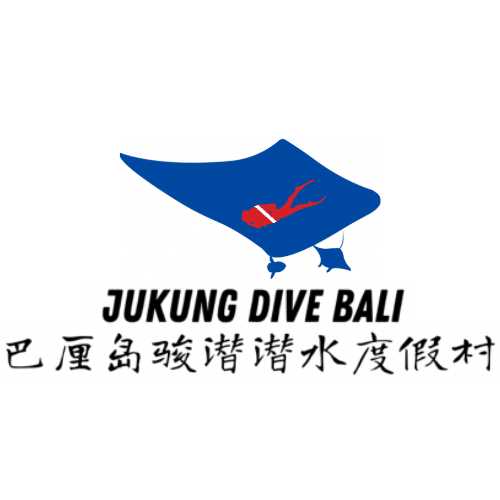DIVE AROUND PENIDA & PADANG BAI
Nusa Penida is the only region in Bali where you can regularly see Manta Rays all year round and Oceanic Sunfish (Mola) – mainly between July and October. Penida is also home to over 500 species of reef fish, corals, and pelagic creatures.
Diving around Nusa Penida is fantastic all year round. During the rainy season the rains primarily happen in the late afternoon and evening, making diving very feasible, and sites are less busy. The ocean temperature during this time is warm and comfortable.
The marine life is consistently spectacular. During the peak season between June – November the water is much cooler, crisp and visibility is fantastic.
During this time you will have a high chance of seeing a Mola/Oceanic Sunfish/Moonfish. Our local manta population is here for 11 of 12 months of the year and the reefs are healthy and colourful 365 days of the year.
Padang Bai dive sites are almost the same distance as to Manta Point, when weather and sea conditions permit, we cover also dives sites in Padang Bai, which offer both macro and big creatures.
MANTA POINT
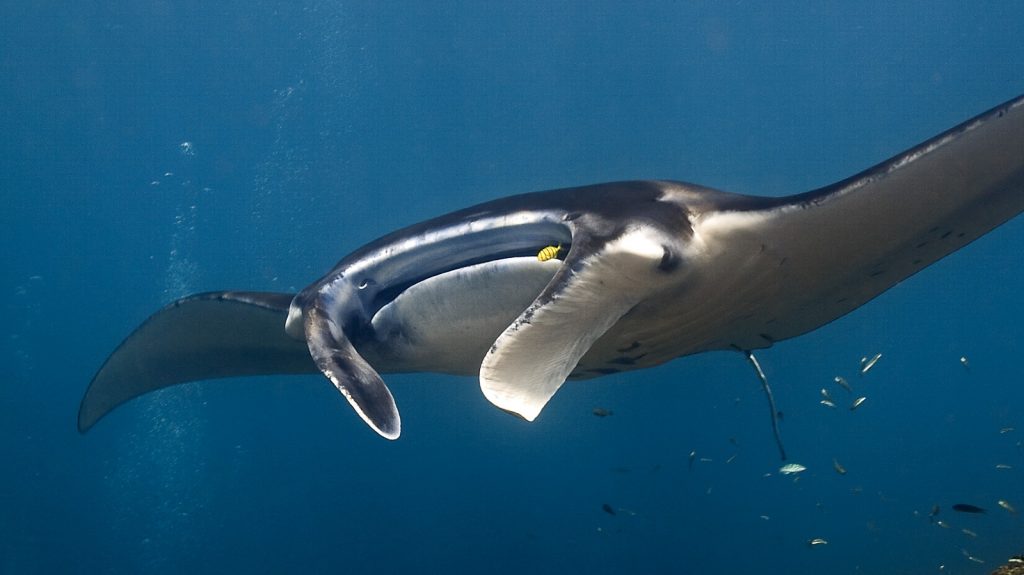
Depth: 5-30m
Difficulty: Advanced
As its name suggests, Manta point is the perfect place to swim with the mantas. No need to get very deep to see them because they usually stay around 3 to 10 meters, sometimes less. You have a higher chance to see bigger mantas than in Manta bay. Swimming slowly around, mantas come here for a cleaning session so it’s pretty common for divers to see them having their washing time.
Chances to see Mantas here are almost 300 days in one year! Seeing manta rays glide gracefully through the waters is really an amazing experience that you will never forget! One of the best manta ray diving sites in Indonesia!
Look out also for loads of blue spotted rays on the sandy bottom and unusually at this dive site they can be found lying on top of each other! Divers also find octopus on the huge limestone rocks that are a feature of this dive site as well as bamboo sharks or a chance sighting of Mola Mola.
Crystal Bay
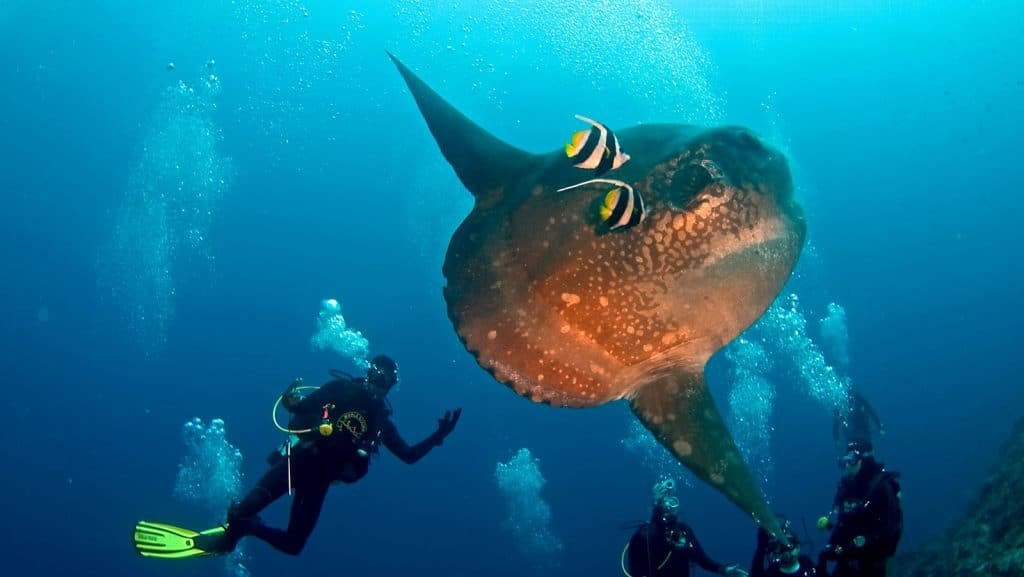
Depth: 5-40m
Difficulty: Advanced
Located in a gorgeous bay fringed by a white sand beach, Crystal Bay is definitely one of the most famous dive sites in Bali for its regular mola-mola sightings during the season (End of August to beginnning of November). Drop down to the sandy bottom and then head over pristine soft corals towards the corner where larger fish and Mola Mola are found in season.
MANTA BAY
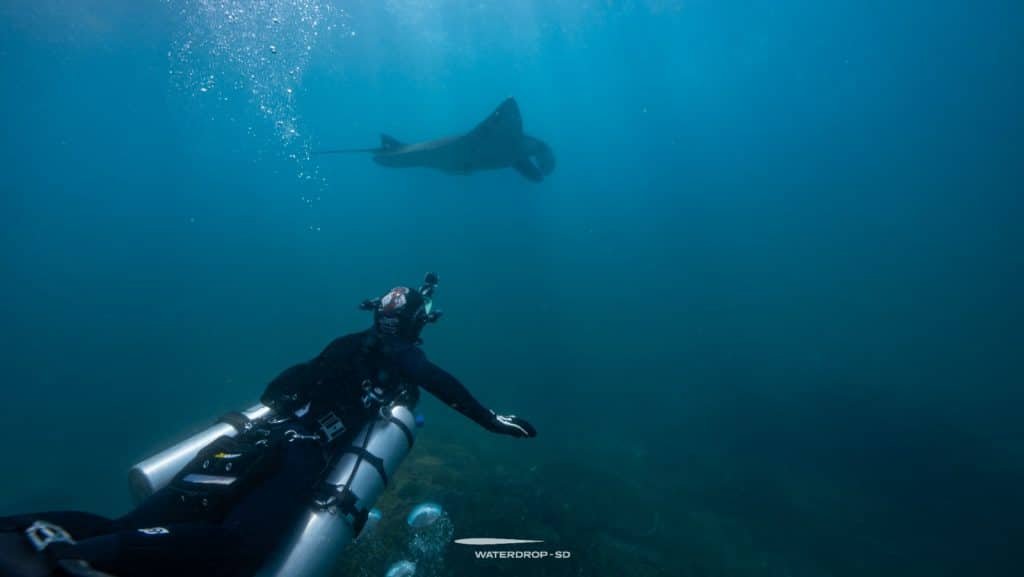
Depth: 5-30m
Difficulty: All level
You probably already guessed what you can see there. Indeed, as its name mentions, this area is the best to swim with Mantas. Other species can be spotted as well, such as bamboo and nurse sharks. Sometimes you might also see dolphins swimming on the surface, which makes it a great and accessible place to snorkel as well.

TOYAPAKEH BAY
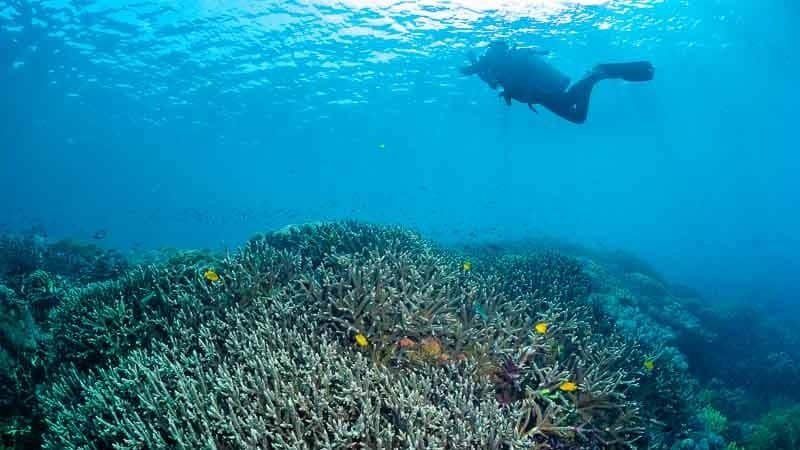
Depth: 5-40m
Difficulty: Advanced
This is a favourite of many of our dive guides for the abundance of corals and marine life as well as for the great visibility.
The dive site enjoys some shelter from the strong currents that run through the deep channel between Nusa Penida and Nusa Ceningan, usually with a gentle drift to the north. However the currents can change quickly, so stay close to our experienced local dive guides for a fun and safe dive.
The main feature of the site is the coral pillars, some of which are huge. We also find large gorgonian sea fans thriving amongst the healthy hard and soft corals and large schools of fish.
At the deeper end of the dive site we see sharks, turtles, and in season the famous Mola Mola.
BLUE CORNER
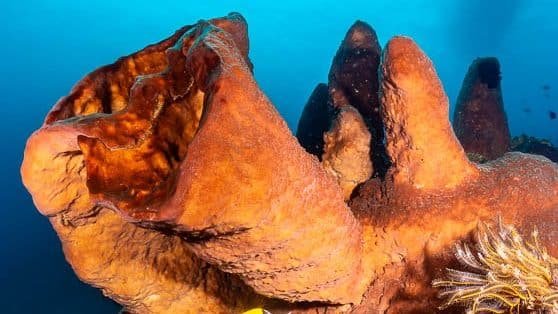
Depth: 15-30m
Difficulty: Skilled
For experienced divers only, as most of the stunning drop off on this dive site located off the shore of Nusa Lembongan is between 20 and 40 meters.
Blue Corner has a great topography and hard corals, a hugely exhilarating drift over multiple terraces full of marine life including eagle rays, marble rays and (in season) the famous sunfish. Blue Corner will be one of your favourite dives when conditions allow, although please be aware it is not always diveable due to strong currents.
The site is characterised by the strong currents that make this a very exciting dive and the water colour here has to be the deepest blue that one might have seen, so this site is aptly named ‘Blue Corner’
MANGROVE
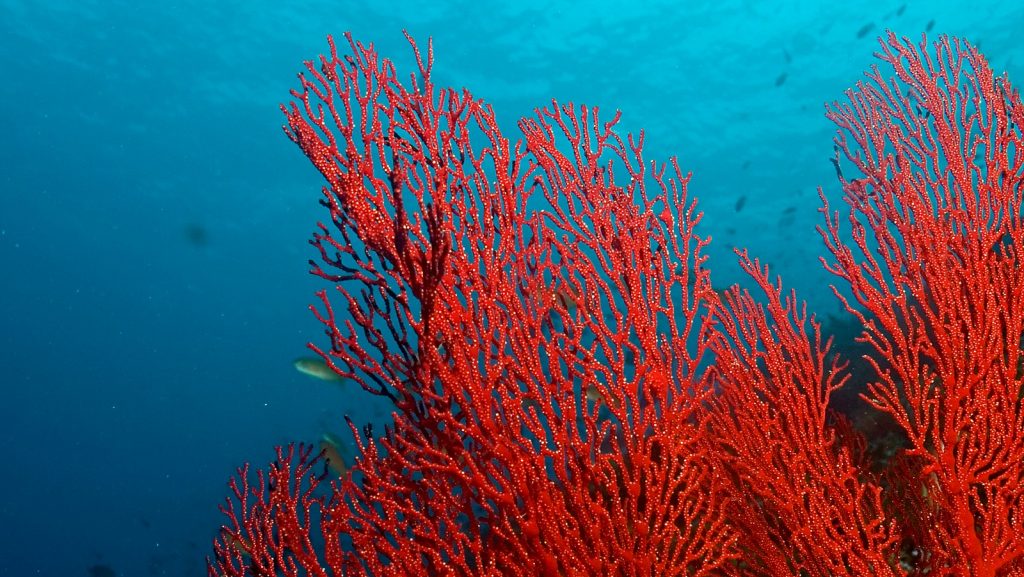
Depth: 5-30m
Difficulty: All level
Anyone diving in the Mangroves may see firsthand how essential mangroves are to the local ecosystem. It does, in fact, contribute to the reef’s health as well as the underwater scenery and corals’ quality.
Mangrove dive sites are well-known for snorkeling, but their topography makes them ideal for scuba diving. The mild slope allows for a descent to roughly 40 meters, however inexperienced divers should practice in shallower places first. Many fish, little and large, reef and pelagic, can be found on the plateau. You’ll be unsure where to look because the display is so thick. It’s truly a visual feast!
Depending on the tide and the full moon cycle, the current is moderate to mild. If it’s a windy day, maintain neutral buoyancy, face the bottom, and enjoy the show!
GAMAT BAY
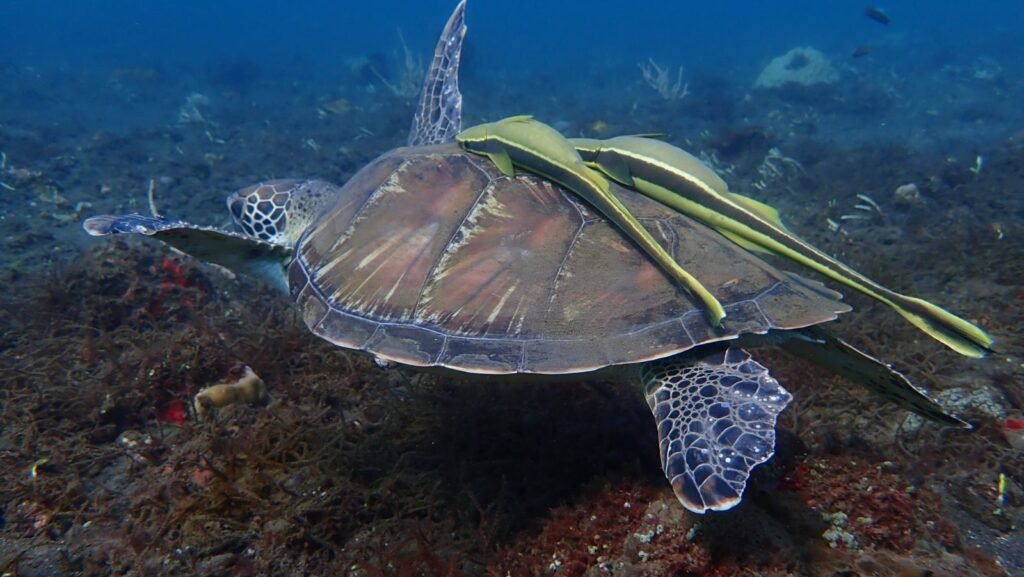
Depth: 6-40m
Difficulty: Intermediate
Looking like a giant aquarium this place offers you bright and colorful seascapes. Gamat Bay is a vast and shallow coral plateau between two rocky points. A descending slope extends the length. This plateau is 6 to 8 meters deep (a little deeper at high tide). At the further end of the bay, there is a 40-meter-long wall. Our playground is defined by a sandbank that runs in the direction of the blue. Everyone diving Gamat Bay should take advantage of this incredible playground! As a result, it’s one of our top 20 dive locations in Bali!
Drifting around the reef is the goal here. The site’s terrain, which is distinguished by beautiful coral formations, adds to the dive’s appeal and beauty. Although challenging at times, its privileged location provides an experience rich in underwater flora and fauna, from the smallest to the largest. We frequently saw nudibranchs, turtles, moray eels, batrish and marble ray squads, as well as our beloved Mola Mola.
CENINGAN wall
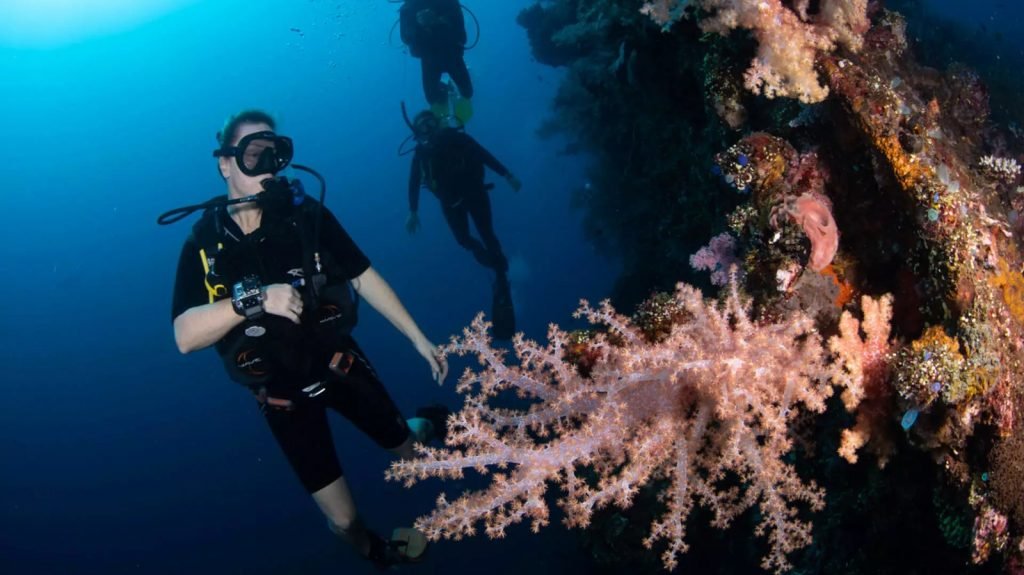
Depth: 3-30m
Difficulty: Skilled
This dive site is really a gift for dives, on a good day, it can blow your mind away!
The dive begins with a drop onto a swell-tossed shallow plateau. Surrounded by fusilier, moorish idols, and clownfish, there are already some active coral bumps. A vertiginous and multicolored wall descends further into the blue. The Ceningan Wall is a collection of species from Nusa Penida. It’s completely covered in corals, sponges, and sea fans, and it’s full of vibrant colors.
Although currents can be hard due to their geographic position, they are a huge value to the growth of fauna and vegetation. It is a well-known location for macro life. Various species of Nembrotha, Chromodoris, and Flabellina nudibranchs can be spotted. However, there are also Zanzibar shrimp and Pygmy Seahorses. Moray eels, scorpionfish, and stonefish appear to have discovered their ideal habitat while drifting along the wall.
Even if it’s difficult to take a break from staring at that hypnotic and beautiful wall, the deep blue has many surprises. There are schools of big Trevally, tuna, and batfish, as well as families of white-spotted eagle rays if you’re lucky. And, when the water grows cooler, our beloved Mola Mola!
Because to the currents, diving Ceningan necessitates concentration and rigor. Currents and thermoclines, on the other hand, are responsible for transporting all of the sediments and phytoplankton that help to form and preserve places like the Ceningan Wall. Indeed, such a rich array of hues and life has been kept here. The divers will be ecstatic.
LEMBONGAN BAY
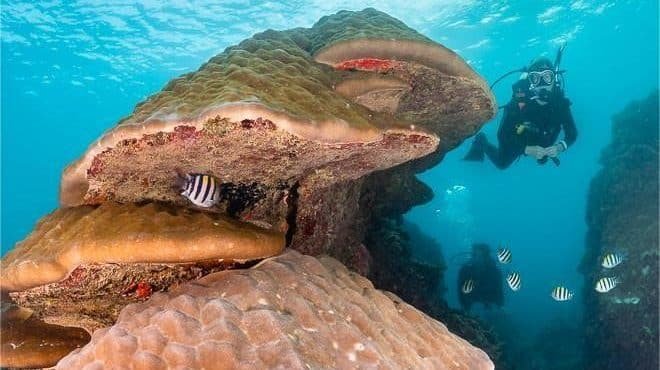
Depth: 3-15m
Difficulty: Easy
Right in front of Nusa Lembongan harbour, this bay offers calm conditions and shallow waters which makes it an ideal dive site for training and beginners. If the conditions are good and with good visibility it is an explosion of colors. In fact, the white sand bottom brings out all the colors of the large coral heads. Of course here we come for an atmospheric dive in search of juvenile fish of a thousand colors, crabs, shrimps, moray eels, octopuses, cuttlefish, anemones…
We love doing the first Open Water training dive on this site as well as the specialties like buoyancy control or fish identification.
NORTH COAST SENTAL/PED/SD/ BUYUK/TUGU
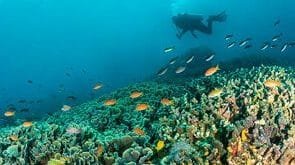
Depth: 5-40m
Difficulty: All level
Nusa Penida’s north coast, where our dive resort is located, is home to some of Bali’s most magnificent drift dives.
From SD up to Buyuk is a long strech of coast with shallow sloping reefs and some drop off covered in corals of all sorts and with amazing fish life. You can see pretty much everything here, from the smallest reef inhabitants to mola molas in season!
These dive sites, like the others mentioned above, are used for drift diving. You will, in fact, allow yourself to be dragged along the wall by the current in order to see the “movie” in front of you! Your guide will demonstrate how to use the macro in this location. Nudibranchs, crabs, and even ghost fishes are just a few examples. It is, indeed, a spectacular treasure quest that causes even expert divers to see stars in their eyes! To examine the macro, however, good buoyancy is still required! A sloppy palm stroke can keep you from seeing what your mentor is showing you. You’ll also have to wait because the first anemone does not include any ghost fish or other unusual species!
During dives, the currents may change direction, but this is not an issue because we will be going back and forth. Downdrafts can occur under unusual settings. We shall be extremely cautious when advising in these situations.
EAST COAST
SAMPALAN
KARANG SARI
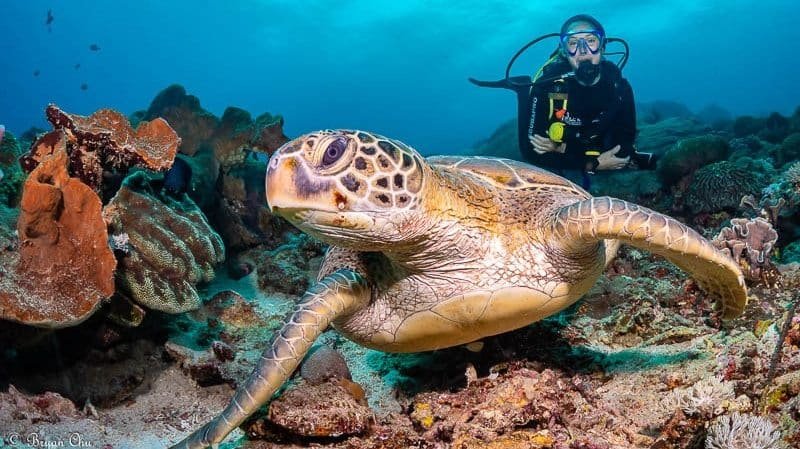
Depth: 5-40m
Difficulty: All level
These dive sites on the East coast of Nusa Penida are less visited, so it is the perfect spot to enjoy the reefs without being disturbed by the crowds!
Both offer sloping reefs and some steeper areas. The sponge covered reefs usually have milder currents allowing us to search for the abundant macro life that these sites offer. The deep waters along the reefs sometimes bring up the big stuff, sharks and mola molas are not uncommon on these sites. Molas are seen often on this side of the island so you should always keep an eye on the blue.
PADANG BAI
GILI MIMPANG
GILI TEPEKONG
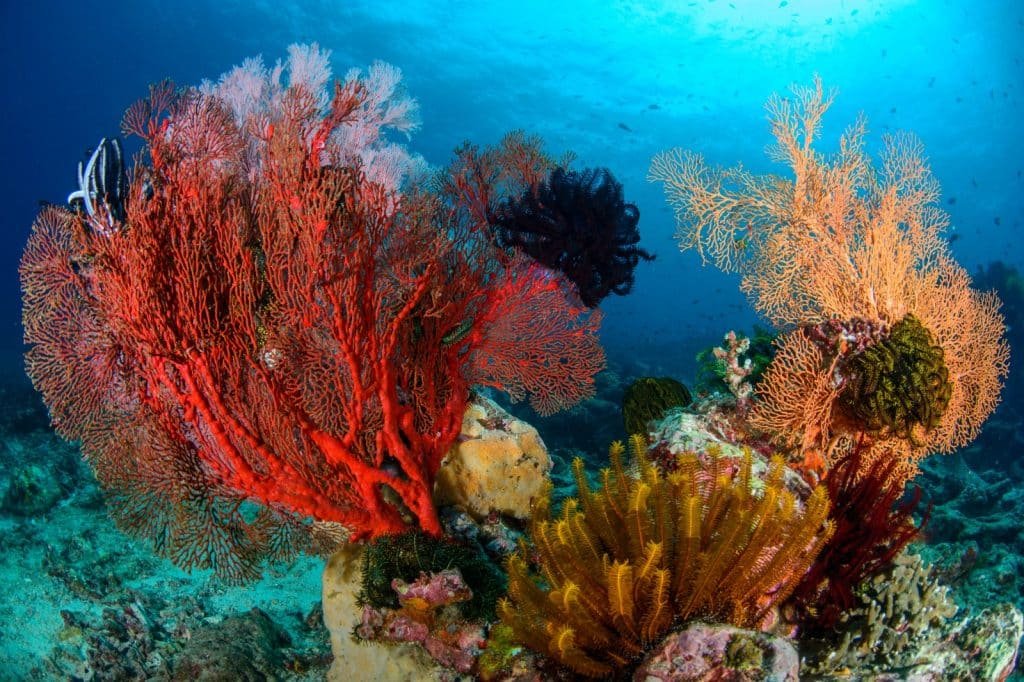
Depth: 5-40m
Difficulty: Advanced
Going from Penida to the these dive sites at Padang Bai takes the same time as going to Manta Point, and these are two best dive sites in Padang Bai, they are definitely worth the trip! Both dive sites are not for beginners, since conditions can sometimes be challenging. For both, you must be advanced diver and have a fair amount of dive experience.
Gili Mimpang is made up of 3 small groups of islets and we start the dive north of the middle one. The strong southerly current will bring us to the South where we will turn into a sheltered area. Along the way we are looking into the blue to see schools of fish, barracuda, tuna hunting, sharks and of course the Mola Mola. Air goes down quickly in your tank at Gili Mimpang. When air allows we will continue around the islet with beautiful corals and abundant marine life. Otherwise, we may be drifting in open water during our safety stop!
Gili Tepekong is one of Bali's most challenging dive sites. It is imperative to have good guides because we do not do it in the same way depending on the conditions. For experienced divers, this is one of our most popular sites where we often see sharks and mola mola! When the conditions allow it, the dive site is one of the most playful in Bali. A drop off, swim-through, play of colors in the shallow parts, a strong surge and current -this site has it all! Tepekong is a dive site for the Mola Mola in season but the topography is so nice that we never get bored of doing it all year long. With a wall, caves, and a canyon, regardless of conditions, there is always something exciting to see. Our experienced captains and guides will ensure a good dive while keeping safety a top priority -here we don't mess with Mother Nature!
